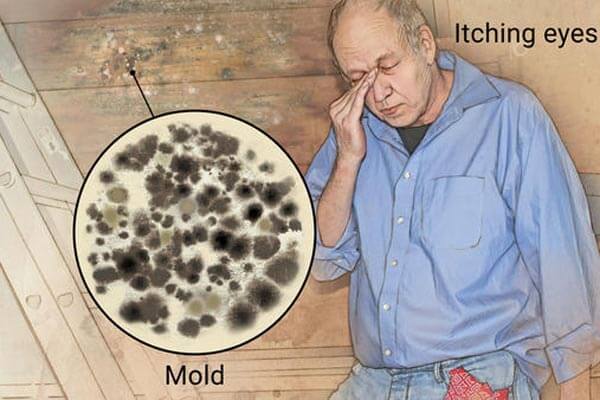Signs of Mold Allergy Symptoms
Do you believe you have mold in your home? Are you seeing signs of allergies and believe it’s because of mold growth in your home? Being exposed to mold (at work, home, or outdoors) causes the immune system to overreact and can be more harmful to elderly adults, young children and anyone with a compromised immune system.
Here are common mold allergy symptoms people may experience:
- Nasal: runny nose, post-nasal drip, or sneezing
- Eyes: itchiness, puffy eyes, or watery eyes
- Also common: coughing, shortness of breath, or throat irritation
Mold Treatment
If you begin to notice one or more of these symptoms, even without visual signs of mold, you should get your home or business tested for mold. You can do this by hiring an air quality professional to complete an indoor air quality test. Here is a general list of treatment steps to follow:
- Perform indoor air quality test
- Hire a professional restoration company to perform the mold removal remediation
- Properly contain affected space
- Remove damage building material
- Wipe and clean all mold affected areas with an anti microbial solution with proper PPE
- HEPA vacuum the mold damage affected space
- Perform final test after cleaning for clearance back into affected space
Reduce Your Exposure to Mold Spores Inside
- Use central air conditioning with a HEPA filter attachment. This can help trap mold spores from spreading in your home. Freestanding air cleaners are helpful but they also only filter air in a limited area. Filtering air in one area will not prevent the mold spores from spreading in your home throughout your HVAC.
- Lower your indoor humidity. One of the key ingredients for mold growth is water, if you eliminate the moisture needed for mold as a result you reduce the possibility of mold growth. If indoor humidity is above 50 percent, fungi can grow. A hygrometer is a tool used to measure humidity. The goal is to keep humidity below 45 percent, but below 35 percent is better.
- If you have to use a humidifier, clean the fluid reservoir at least twice a week to prevent mold growth. Air conditioners and dehumidifiers can also be a source of mold growth.
- Prevent mold and mildew build up inside the home. Pay close attention to mold in bathrooms, basements and laundry areas. Be aggressive about reducing dampness.

What Is Mold Allergy?
If you have an allergy that occurs over several seasons, you may be allergic to the spores of molds or other fungi. Molds live everywhere and upsetting a mold source can send the spores into the air. Once airborne the mold spores can get into your nose hairs, lungs and cause mold allergy symptoms as listed above. Inhaling the spores causes allergic reactions in some people. Allergic symptoms from fungus spores are most common from July to early fall. But fungi grow in many places, both indoors and outside, so allergic reactions can occur year round.



